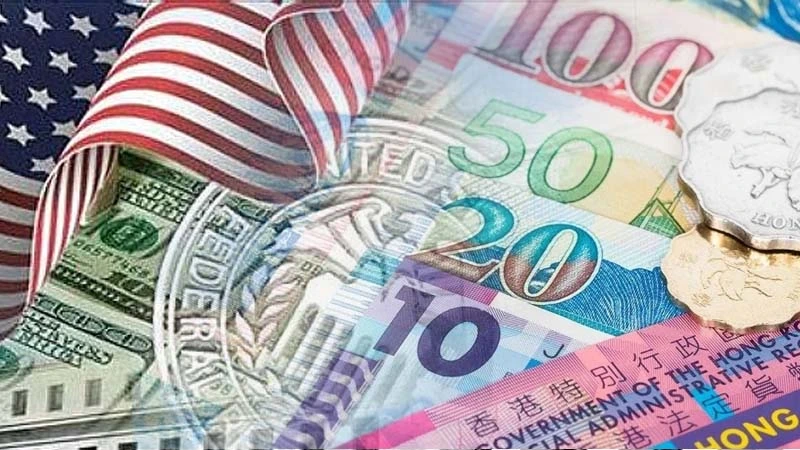2025 Hong Kong Dollar Time Deposit Rate Trend Analysis: Asset Allocation Strategies Under the Influence of Federal Reserve Policies
Amid increasing volatility in global financial markets, Hong Kong dollar time deposits, as a core asset allocation tool for Hong Kong investors, are undergoing structural adjustments. This article provides an in-depth discussion of the driving factors behind rate changes, offering professional market analysis and practical recommendations.
Market Logic Behind Rate Adjustments
The monetary policy of the US Federal Reserve continues to dominate the trajectory of Hong Kong’s financial market. Following the January 2025 decision to maintain the benchmark rate, local banks have experienced a liquidity surplus, with the loan-to-deposit ratio falling to 83%, the lowest in five years. This phenomenon has prompted major commercial banks to adopt differentiated pricing strategies, particularly in the 3-month deposit segment, where significant price stratification has emerged.
It is noteworthy that virtual banks are reshaping the competitive landscape. For instance, Fusion Bank maintains a high 3.5% rate for 6-month deposits, representing a 0.4 percentage point premium over the average rate offered by traditional banks. This pricing strategy reflects how new financial institutions leverage digital operations to reduce costs, thereby enhancing the competitiveness of deposit products through business model transformation.
Latest Rate Comparison and Product Feature Analysis
According to a market survey conducted in February 2025, Hong Kong dollar time deposit products across various financial institutions exhibit three major characteristics:
| Institution Type | Rate Advantage Range | Minimum Threshold | Featured Services |
| Traditional Banks | 3 to 6-month term | 10,000 to 5,000,000 | Exclusive rates for premium clients |
| Virtual Banks | 6 to 12-month term | No minimum requirement | Instant online renewal feature |
| Foreign Banks | 1 to 3-month term | Starting from 500,000 | Cross-border fund management solutions |
In terms of specific rate performance, Industrial and Commercial Bank of China (Asia) offers a preferential 3.4% rate for 3-month deposits exceeding HKD 3 million, while HSBC Premier clients can enjoy a 3.2% rate for the same term. This tiered pricing mechanism demonstrates how banks are targeting specific customer segments through differentiated services.
Forward-looking Asset Allocation Strategies
In the face of a declining interest rate cycle, professional investors should establish a dynamically adjustable deposit portfolio. It is recommended to adopt a “laddered maturity strategy”, allocating funds across 1, 3, and 6-month term products. This approach captures short-term interest rate fluctuation opportunities while ensuring liquidity.
Based on the current market environment, allocating 40% of funds to 3-month term products, 30% to 6-month term products, and keeping the remaining 30% in demand deposits can achieve an estimated annualized comprehensive yield of around 3.1%, while maintaining quarterly liquidity turnover of HKD 500,000.
Regulatory Policies and Risk Control
The Hong Kong Monetary Authority has recently tightened liquidity coverage ratio requirements, mandating banks to maintain over 100% of high-quality liquid assets. Although this policy safeguards financial system stability, it indirectly limits the upward movement of deposit rates. Investors should pay particular attention to two types of risks.
Interest Rate Lock-in Risk: Long-term fixed deposits may miss out on potential gains during an interest rate hike cycle.
Institutional Credit Risk: Although virtual banks offer higher interest rates, their average capital adequacy ratio is 2.3 percentage points lower than that of traditional banks.
It is recommended to prioritize banks recognized as systemically important and to keep deposits in any single institution within the HKD 500,000 coverage limit of the Deposit Protection Scheme.
Market Outlook and Alternative Options
Federal Reserve rate futures indicate a 78% probability of a rate cut in March, with expectations that Hong Kong banks will follow by lowering the prime rate by 15 basis points. Under this expectation, 6-month term deposit rates may fall to the psychological level of 3.0%.
For investors with higher risk tolerance, it is advisable to consider allocating part of the funds to structured deposit products. For example, the latest “Equity-FX Win-Win Plan” launched by Bank of China (Hong Kong) offers principal protection and floating returns linked to the Hang Seng Index, with an expected annualized return range of 1.5% to 6.8%.
Summary: Core Thinking in Building Stable Cash Flow
In the current low-interest-rate environment, the strategic value of HKD time deposits lies in their dual functions of “risk buffer” and “liquidity management”. Investors should regard time deposits as the ballast in asset allocation rather than merely a profit-generating tool. By carefully calculating the slope of interest rate curves across different terms, capital utilization efficiency can be effectively enhanced—for example, locking in the peak rate of a 3-month term while keeping part of the funds available for short-term promotional deposit offers.
It is worth noting that the interest rate differentiation between virtual banks and traditional institutions will continue to expand. It is recommended to adopt a “core + satellite” allocation model: allocate 70% of funds to basic time deposits in systemically important banks; 30% to capture limited-time high-interest promotions offered by virtual banks. In 2024 market evidence, this strategy successfully generated an additional 0.8% annualized return for investors.
With the development of financial technology, future time deposit management will become increasingly intelligent and dynamic. Investors should closely monitor automatic rollover promotions and rate-linked schemes launched by banks, leveraging digital tools to achieve real-time optimization of deposit portfolios, thereby maximizing capital efficiency during interest rate fluctuation cycles.
*The content of this article is for sharing and reference purposes only and does not constitute professional investment advice. As personal circumstances and needs vary, you may contact the Cashback Island team or consult your financial planner for professional advice.
Frequently Asked Questions
Q1. What is a time deposit rate?
A time deposit rate is the interest calculation standard set by financial institutions for “fixed-term deposits”, usually expressed as an annual interest rate. When customers deposit funds into a bank and agree on a fixed term (such as 3 months or 1 year), the bank pays interest based on this rate. Its key feature is that the rate remains fixed during the deposit term and is generally higher than demand deposit rates, making it suitable for capital planning aimed at stable returns.
Q2. Example of calculating HKD time deposit interest rate
Assume depositing HKD 100,000 in a 6-month time deposit with an annual interest rate of 4.5%. The interest at maturity would be:
Interest = Principal × Rate × Term (in years)
= 100,000 × 4.5% × (6/12)
= HKD 2,250
Two key points to note:
- Simple interest vs compound interest: Hong Kong banks generally use simple interest calculation, with some banks offering compound interest rollover options only for terms exceeding 1 year.
- Minimum deposit threshold: Most banks require a minimum deposit of HKD 10,000, while high-interest promotions are usually limited to new funds or large deposits of over HKD 500,000.
Related articles
-
Since 2025, global financial markets have continued to focus on the monetary policy trends of the US Federal Reserve (Fed) and movements in the US Dollar Index. As a barometer of the international market, the performance of the US Dollar Index (DXY) directly affects asset prices and capital flows in...2025 年 3 月 18 日
-
2024 Q4 US Nasdaq Index plunged 3.6%, while the Hang Seng Tech Index fell 4.2% simultaneously, highlighting that the linkage between the two markets has deepened to the level of capital flows. Facing the Federal Reserve’s policy swings, the tech industry’s cyclical shifts, and rising geopolitical risks, Hong Kong stocks...2025 年 2 月 21 日
-
In February 2025, Donald Trump's 25% tariff on imported cars triggered an instant earthquake in the global supply chain. This trade policy, which has been labelled “America First 2.0", has not only forced multinational car companies to urgently reorganise production, it has also pushed the price of precious metals past...2025 年 2 月 21 日













